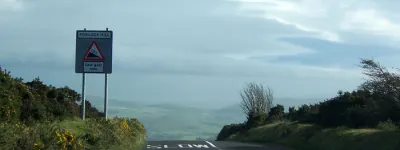If you're planning to drive in to Central London, it's not just the traffic you'll need to consider. There's also the Congestion Charge, a road toll applying across the City and West End to discourage journeys by road.
For many centuries, right through to the present day, London's traffic problems have been the stuff of legend. Cars, delivery vans and buses form a slow-moving swamp of vehicles down most of the main streets for most of the day, and have for decades. It's no surprise that, over the years, there have been all sorts of new and innovative proposals to clean up the mess.
Ken Livingstone, Mayor of London from 2000 to 2008, caused a political storm when he declared that he was going to charge motorists for something that has always been free to them — the roads. Introduced in 2003, modified in 2007, 2011 and 2017, the Congestion Charge Zone has remained controversial ever since.
What do I pay?
The charge is dependent on the type of vehicle, the time it is paid and the method of payment.
Charges were correct at June 2020.
| Charge | Method of payment | Timescale |
|---|---|---|
| £15.00 | Phone, online or through the TfL "Pay to Drive" app | Paid in advance or paid before midnight on the day the charge is due. |
| £17.50 | Phone, online or through the TfL "Pay to Drive" app | Paid after the day the charge was due, but before midnight on the third day afterwards. For example, if the charge is due on a Friday, it must be paid by midnight the following Monday. |
The emissions surcharge or "T-Charge" no longer applies, and is replaced by the ULEZ.
What happens if I don't pay?
The charge can be paid at the normal rate until midnight on the day it was incurred. It can be paid until midnight on the third day afterwards at the increased cost of £17.50.
If the charge has not been paid after that time the registered keeper of the vehicle is sent a Penalty Charge Notice and is liable for a fine of up to £130. If the charge is then paid within 14 days it is discounted to £65.
In the event of non-payment, the black-and-white image of the car showing its registration number is stored for prosecution and possible court case, and the image from the colour camera is also stored to provide corroborative evidence (such as the colour and make of the car) to prove the vehicle was correctly identified.
It is thought that the cameras can be avoided if a vehicle changes lanes as it passes through one of the camera sites — confusing the system by not being in any particular lane at the point the cameras would register it — or by tailgating large vehicles in order to hide the registration plate. However, given the number of cameras in the system and the volumes of traffic at the time the charge is in operation, pulling off such a maneouvre reliably at every camera site would be almost impossible, and probably not worth the trouble for a £15 charge anyway.
Who is exempt?
Various exceptions and exemptions are permitted by Transport for London, which are detailed below (correct at November 2009).
| Charge | Types of vehicle | Action necessary |
|---|---|---|
| Free |
|
None |
| Free |
|
Register with TfL |
| Free |
|
Registration with TfL, incurring a £10 fee. In most cases this is renewable annually |
| Free |
|
Application to TfL for reimbursement |
The residents' discount for those living within the Congestion Charge zone, and the discount for motorists who had signed up to TfL's "auto-pay" system, were terminated on 22 June 2020. Transport for London described this change as temporary.
With thanks to Rob Fairhead for information on this page.
